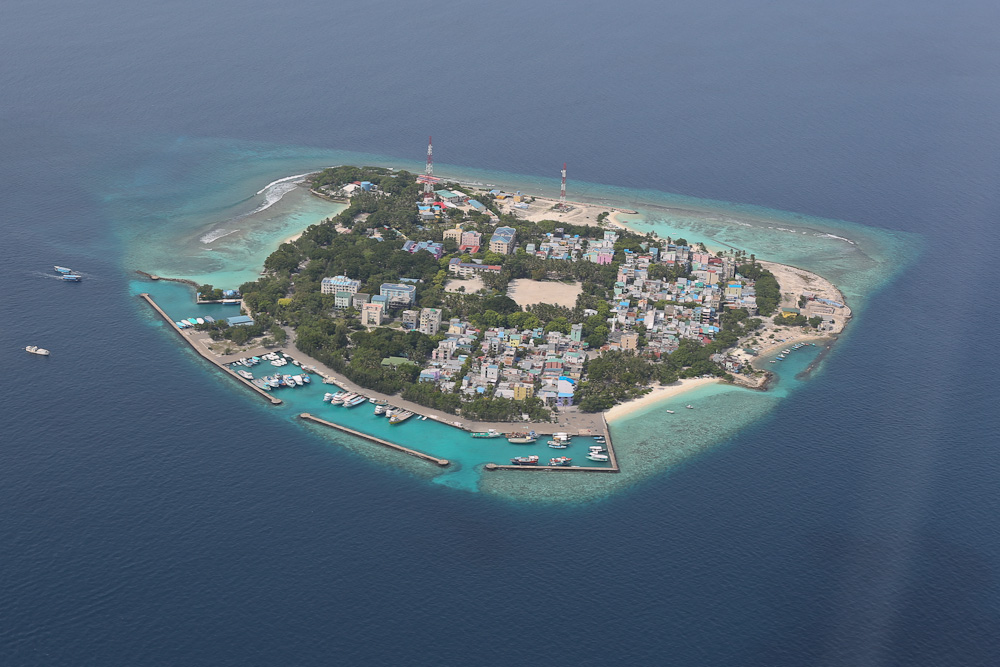#islands
Embark on a visual #journey accompanied by the sounds of nature through the #Pacific #Islands. Photographer and filmmaker I#anShive experiences #remote and protected #coral #atolls and shores, the birthplace of millions of turtles, seabirds, sharks, manta rays and fish.
(42:16)
Source: https://youtube.com/watch?v=kMwBiZjpugU
An amount of land equivalent to the Isle of Wight has been added to the shorelines of 13,000 islands around the world in just the last 20 years. This fascinating fact of a 369.67 square kilometre increase has recently been discovered by a group of Chinese scientists analysing both surface and satellite records. Overall, land was lost during the 1990s, but the scientists found that in the study period of three decades to 2020 there was a net increase of 157.21 km2. The study observed considerable natural variation in both erosion and accretion.[...]
The scientists identify many reasons why islands can grow in size despite the small annual rises in sea level seen in many parts of the world. It is noted that island shorelines are constantly changing due to factors such tides, winds, nearshore hydrodynamics and the transport of sediment. On inhabited islands, human action such as fish farming and land reclamation can be important.
Of course, humans action can have a number of unintended consequences, notably the mining of coral and the breakdown of natural water barriers.
Good to know facts, lets see what another three decades will do. The article itself isn't much of a read do to its poking a laugh at the climate change hysteria, its not good journalism, but the article does present a counterbalance to the one-sided alarmism that seem to prevail. (Environmental knowledge is inversely associated with climate change anxiety - https://link.springer.com/article/10.1007/s10584-023-03518-z)
#Climate #Water #Islands #Alarmism
Islands That Climate Alarmists Said Would Soon "Disappear" Due to Rising Sea Found to Have Grown in Size – The Daily Sceptic

The first thing that struck me about São Tomé and Príncipe is how remote it feels, and it is – two craggy volcanic #islands marooned in the Gulf of Guinea 155mi (250km) off Africa’s West Coast. With a population of around 206,000, this is Africa’s second smallest nation after The Seychelles, and one of the least visited, with around 30,000 visitors in 2018.
Uninhabited until the 16th century when Portuguese explorers arrived on Príncipe’s shores, the crumbling, former banana, cacao, coffee and sugar cane plantations known as “roças” that dot both the #island s, are vestiges of its often-brutal colonial #history until it gained independence from Portugal in 1975. Both islands are blanketed in emerald jungle, fringed by beaches and hidden coves of the golden sand variety with peaks like São Tomé’s Cao Grande, an otherworldly granite spike rising 663m (2,175ft) above the jungle.
Having traveled the 86mi (140km) from #SãoTomé to neighboring #Príncipe, a Unesco Biosphere Reserve, it felt like I had left the modern world behind. Against its backdrop of mist-cloaked mountains and luxuriant #jungle, turtles nest on its deserted beaches and whales populate the surrounding waters.
The islands’ dazzling biodiversity is another draw, with scores of endemic plants and bird species not found anywhere else on Earth. Tourism is still very much in its infancy here; São Tomé and Príncipe still felt gloriously unspoiled, and there was always a smile and a wave for me.
Learning a few words of Portuguese will greatly enhance any stay here, as English is not widely spoken. Nudging the equator line, life on these islands is slow, in fact, the Santomeans have a word for it, leve leve, or “easy, easy” which is a state of mind that came easily here.
https://www.worldnomads.com/travel-safety/africa/sao-tome-and-principe/sao-tome-and-principe-guide
Is #SãoTomé-and-Príncipe Safe? 5 Travel Safety Tips
Here's a bit of travel photo/video from someone I know to be a great photographer/videographer, who makes me both jealous and grateful with the sharing of this video from 'home'. Gorgeous vids and images. Well, if you can't get up and go... Ah, vicarious travel!
Mediterranean Sea wonders : Lipari Aeolian Islands. All the Aeolian Islands in 7 minutes.
#travel #Mediterranean #Lipari #Aeolian #islands #Italy #photography #videography
#Black-Parrot or Lesser Vasa Parrot are found on #Madagascar and the #Seychelles #Islands

The Black Parrot or Lesser Vasa Parrot are found on Madagascar and the Seychelles Islands where they mostly inhabit mangrove swamps and evergreen forests. Diet includes seeds, blossoms and fruit (especially berries and mangos). Sexes similar but males are slightly larger.
http://www.nejohnston.org/birds/bird_BlackParrot.shtml

Have you ever seen an #entire #rainbow?
From the ground, typically, only the top portion of a rainbow is visible because directions toward the ground have fewer raindrops. From the air, though, the entire 360-degree #circle of a #rainbow is more commonly visible.
Pictured here, a #full-circle rainbow was captured over the #Lofoten #Islands of #Norway in September by a drone passing through a rain shower. An observer-dependent phenomenon primarily caused by the internal reflection of sunlight by raindrops, the rainbow has a full diameter of 84 degrees. The #Sun is in the exact opposite direction from the rainbow's center. As a bonus, a second rainbow that was more faint and color-reversed was visible outside the first.
https://youtube.com/watch?v=xctzp0dp9uc

Prime Minister of Solomon Islands Address UN General Assembly
https://yewtu.be/watch?v=FVy68Hnh6tc
#primeminister #manassehsogavare #sogavare #solomonislands #solomon #77th #unitednations #unga #positive #speech #pacific #islands #unity #friendship #solidarity #justice #peace #climatechange #universal #humanrights #cuba #australia #nz #china #crossroads
Daulphin - Greek Hieroglyph's - Knossos Palace. 2500-1500 BC
#Κνωσός #Knossos #Minos #Minotaure #Europa #Europeans #Greeks
#Antiquité #Grecs #Arts #Painting #Έλληνες #Greece #Islands #Crete


















/cloudfront-us-east-2.images.arcpublishing.com/reuters/PZEMSX5PB5NJPI7GZ7WUAZXXS4.jpg)